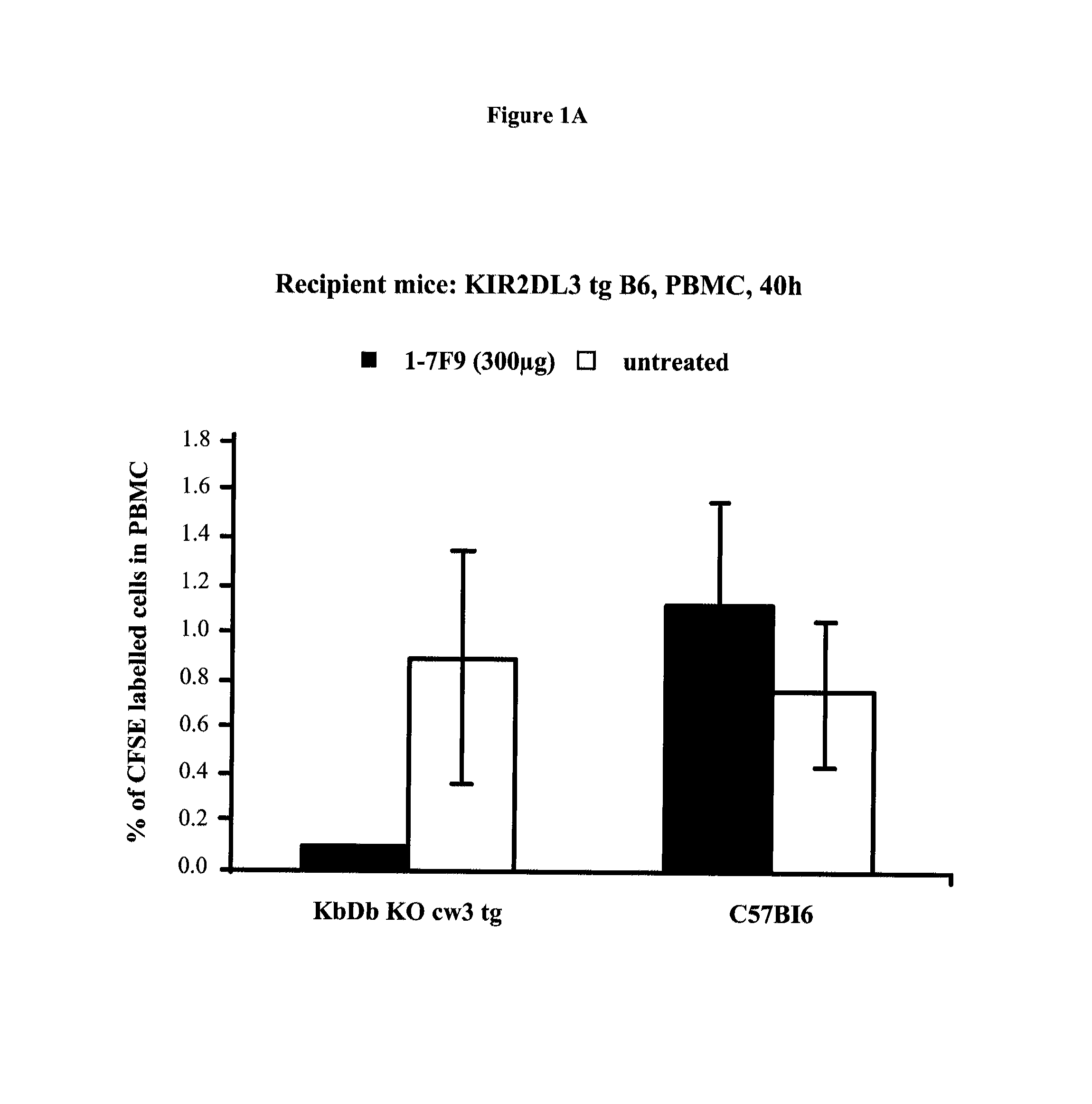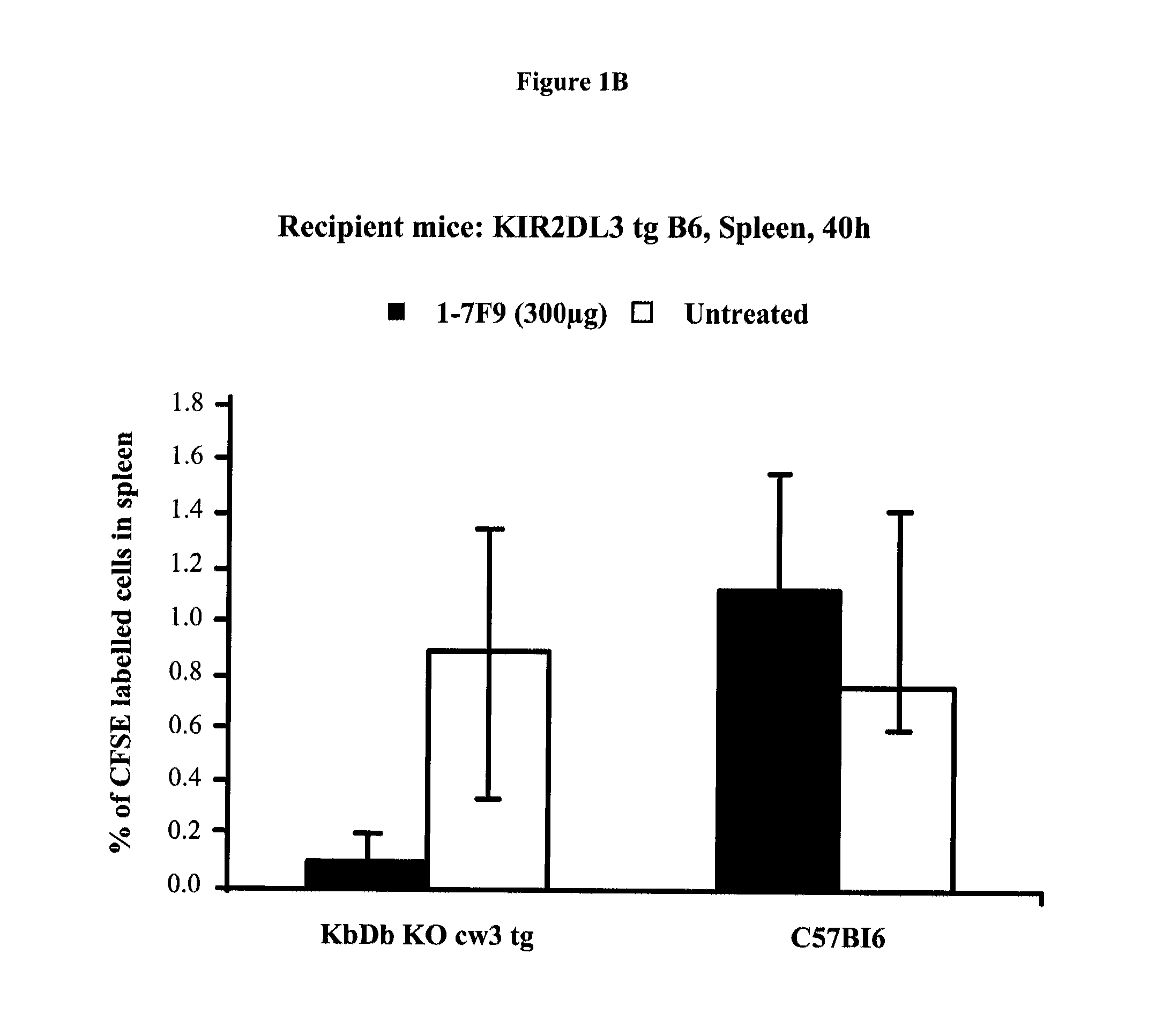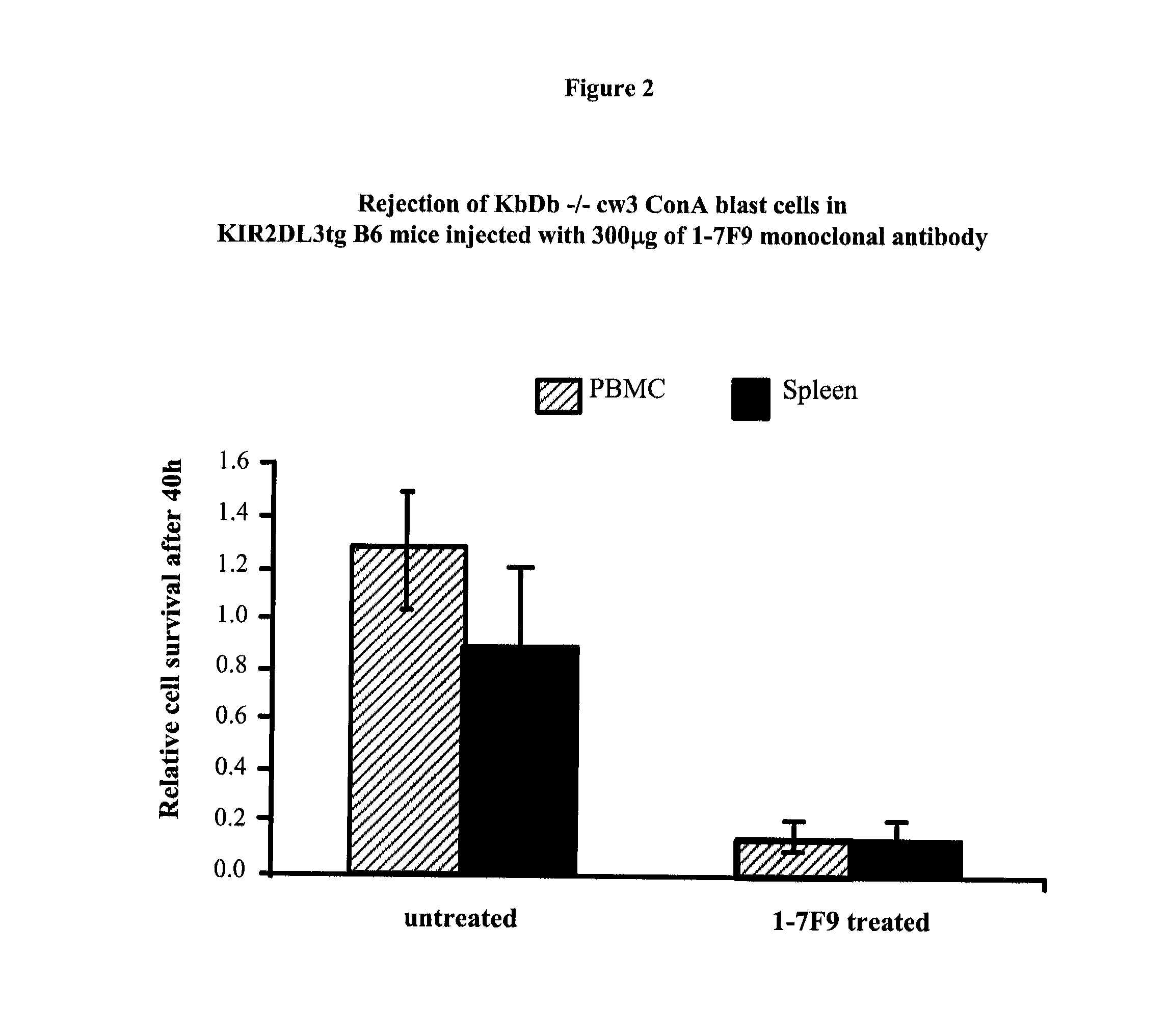Anti-kir antibodies for the treatment of inflammatory and autoimmune disorders
- Summary
- Abstract
- Description
- Claims
- Application Information
AI Technical Summary
Benefits of technology
Problems solved by technology
Method used
Image
Examples
example 1
Pharmacokinetics in Patients
[0644]Plasma concentrations of anti-KIR (1-7F9) are determined by ELISA as briefly described below.
[0645]The plates are coated with KIR2DL3 coating solution (100 μl / well) and incubated overnight at about +4° C. The plates are then washed 3 times with wash buffer using an automated plate washer (400 μl / well). Blocking buffer is added (200 μl per well) and plates are incubated for approximately 2 hours on a plate shaker at room temperature. After this, the plates are once again washed 3 times with wash buffer (400 μl / well).
[0646]Standards, quality controls and samples are added to the plates (100 μl / well) before incubation for approximately 2 hours on the plate shaker at room temperature. Before adding mouse anti-human IgG4:peroxidase working solution (100 μl / well) the plates are washed another 3 times (as above). The plates are then again incubated for approximately 2 hours on a plate shaker at room temperature, after which they are washed once again.
[0647...
example 2
KIR Occupancy Assay
[0648]Receptor occupancy is evaluated on human whole blood samples by four-color fluorescence analysis. Briefly, free and bound KIR2D receptor levels are assessed on T and NK lymphocytes in EDTA anti-coagulated peripheral blood. Free site assay will assess unbound KIR2D by staining with PE-conjugated 1-7F9, which binds to the KIR2D molecule. Bound site assay will assess KIR2D receptors occupied by 1-7F9 by staining with a PE-conjugated mouse anti-human IgG4 monoclonal antibody that recognizes the 1-7F9 bound to the KIR2D receptors. The Free and Bound Assays will allow for assessment of both percentage positive staining as well as the fluorescence intensity [MESF] for 1-7F9-PE or anti-hIgG4-PE. The following combinations of conjugated antibodies are used in the following two assays:
[0649]Free Site Assay: CD3 / 1-7F9 / CD45 / CD56
[0650]Bound Assay: CD3 / hIgG4 / CD45 / CD56.
[0651]Samples are analyzed on a Becton Dickinson FACScalibur using the Becton Dickinson Cellquest softwar...
example 3
Clinical Safety and Auto-Reactivity
[0652]A single dose escalation trial was conducted in elderly acute myeloid leukemia (AML) patients (>60 years), who are in first complete remission following induction and consolidation chemotherapy, and not eligible for bone-marrow transplantation. A standard 3+3 design is applied, and a total of 7 dose levels were explored: Doses range from 0.0003 mg / kg to 3 mg / kg. Following dosing, the patients were monitored for safety, PK and KIR occupancy until KIR occupancy was no longer detectable.
[0653]An extension trial was also conducted. AML patients who had completed the dose-escalation trial and who were still in complete remission could participate in the extension trial, in which the patients were dosed up to 6 times on a monthly basis. The patients are dosed with the same dose as they received in the previous trial.
Patients, Materials and Methods
[0654]In both trials, elderly AML patients (>60 years of age) in their first complete remission (CR) an...
PUM
| Property | Measurement | Unit |
|---|---|---|
| Fraction | aaaaa | aaaaa |
| Time | aaaaa | aaaaa |
| Time | aaaaa | aaaaa |
Abstract
Description
Claims
Application Information
 Login to View More
Login to View More - R&D
- Intellectual Property
- Life Sciences
- Materials
- Tech Scout
- Unparalleled Data Quality
- Higher Quality Content
- 60% Fewer Hallucinations
Browse by: Latest US Patents, China's latest patents, Technical Efficacy Thesaurus, Application Domain, Technology Topic, Popular Technical Reports.
© 2025 PatSnap. All rights reserved.Legal|Privacy policy|Modern Slavery Act Transparency Statement|Sitemap|About US| Contact US: help@patsnap.com



